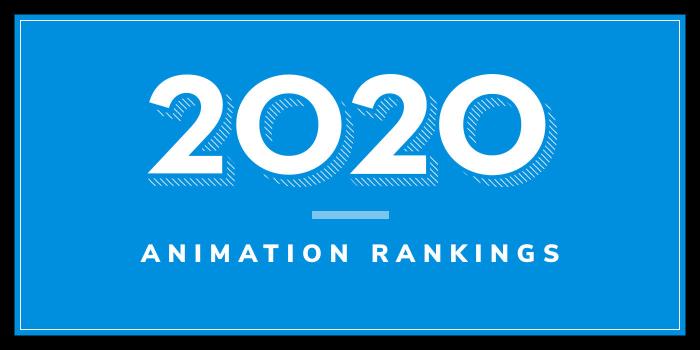
What are the top private animation schools of 2020?
| Ranking | School | State | % |
|---|---|---|---|
| 1 | Ringling College of Art and Design | Florida | Top 2% |
| 2 | California Institute of the Arts | California | 3% |
| 3 | Savannah College of Art and Design | Georgia | 4% |
| 4 | University of Southern California | California | 5% |
| 5 | School of Visual Arts | New York | 6% |
| 6 | New York University (NYU) Tisch School of the Arts | New York | 7% |
| 7 | Rhode Island School of Design | Rhode Island | 8% |
| 8 | Gnomon School of Visual Effects | California | 9% |
| 9 | School of the Art Institute of Chicago | Illinois | 10% |
| 10 | Rochester Institute of Technology | New York | 15% |
| 11 | Pratt Institute | New York | 15% |
| 12 | Otis College of Art and Design | California | 15% |
| 13 | Carnegie Mellon University | Pennsylvania | 15% |
| 14 | Academy of Art University | California | 15% |
| 15 | California College of the Arts | California | 20% |
| 16 | Brigham Young University | Utah | 20% |
| 17 | Full Sail University | Florida | 20% |
| 18 | ArtCenter College of Design | California | 20% |
| 19 | Laguna College of Art and Design | California | 20% |
| 20 | DePaul University | Illinois | 25% |
| 21 | Columbus College of Art and Design | Ohio | 25% |
| 22 | Columbia College Chicago | Illinois | 25% |
| 23 | DigiPen Institute of Technology | Washington | 25% |
| 24 | University of the Arts | Pennsylvania | 30% |
| 25 | University of Pennsylvania | Pennsylvania | 30% |
| 26 | Minneapolis College of Art and Design | Minnesota | 30% |
| 27 | Loyola Marymount University | California | 30% |
| 28 | Drexel University | Pennsylvania | 30% |
| 29 | Woodbury University | California | 35% |
| 30 | Chapman University | California | 35% |
| 31 | College for Creative Studies | Michigan | 35% |
| 32 | Maryland Institute College of Art | Maryland | 35% |
| 33 | Rensselaer Polytechnic Institute | New York | 35% |
| 34 | Rocky Mountain College of Art and Design | Colorado | 40% |
| 35 | Kansas City Art Institute | Missouri | 40% |
| 36 | The Digital Animation & Visual Effects School | Florida | 40% |
| 37 | The New School’s Parsons School of Design | New York | 40% |
| 38 | Cleveland Institute of Art | Ohio | 40% |
| 39 | Syracuse University | New York | 45% |
| 40 | Maine College of Art | Maine | 45% |
Our 2020 list of the Top 40 Private Animation School Programs in the US. For an explanation of ranking criteria, click here.
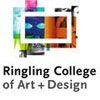
Ringling College of Art and Design (RCAD) is a member of the only global association to serve art and design education research (Cumulus). Established in 1931 by circus baron, art collector, and real estate developer John Ringling, RCAD opened with just 75 students and 111 course offerings. Today, the school serves more than 1,600 students enrolled in 13 BA and BFA degree programs and nine minors. Computer Animation, Film, Game Art, Illustration, and Virtual Reality Development are just a few degree options.
RCAD programs offer a rigorous curriculum, which combines studio and liberal arts, with client projects, substantive internships, and national competitions. The Computer Animation program is one of the most popular programs at the school, accounting for around 20% of the student population. Established in 1990, the BFA in Computer Animation allows students to do it all. Students learn to create characters and tell their stories, as well as design, paint, model, texture, animate, light, composite, and edit original films. The program also focuses on teaching students how to combine essential technical skills with conceptually original ideas that affect an audience emotionally, visually, and intellectually.
Course highlights include Computer Animation I-VI, Development of Art & Ideas, Drawing I-II, Figure Drawing I-II, Film & Narrative, Story Development I-III, Traditional Animation I-II, Visual Development for Computer Animation I-II, and Writing Studio. Students can expect to intern at major studios such as DreamWorks Animation, Pixar, Blue Sky Studios, and Walt Disney Animation Studios, to name a few.
A BFA in Motion Design is also available. Students in the program study animation, concept design, storyboard art, videography, composition, sound design, and art direction. Course highlights include Animation, Animation Techniques, Contemporary Design Culture, Development of Art and Ideas, Drawing and 2D Design, Drawing and 3D Design, 4D Design, Motion Design, Professional Writing for Designers, and Writing Studio.
Students in the program will have the opportunity to work across many different fields with students of other majors and with actual professional clients.
RCAD graduates have worked on every Oscar-winning animated feature since 2003, with 14 alumni working on 2016 Oscar winner Inside Out and 21 working on 2017 Oscar winner Zootopia. Alumni have also worked on 49 of the 50 top grossing animated feature films of all time, including recent films such as Frozen, Ferdinand, Coco, and The Boss Baby, and Big Hero 6. Graduates have also gone on to work at Blue Sky Studios, Cartoon Network, DreamWorks Animation, Electronic Arts, Lucasfilm, Blizzard Entertainment, Nickelodeon, Pixar, Sony Pictures Imageworks, Walt Disney Animation Studios, Sony Pictures Imageworks, and many others.

California Institute of the Arts was formed in 1961 through the merger of two existing Los Angeles schools for art and music. The school, founded by Walt and Roy Disney, became the nation's first postsecondary institution to offer graduate and undergraduate degrees in both the visual and performing arts. Just shy of a decade later, the new college, CalArts, opened its doors to offer programs in art, design, film, music, theater and dance.
Today, the school serves around 1,500 students enrolled in more than 70 undergraduate, graduate, and doctoral programs across six schools including the School of Critical Studies, The Sharon Disney Lund School of Dance, the School of Art, the School of Film/Video, The Herb Alpert School of Music at CalArts, and the School of Theater.
The School of Film/Video is the largest school at CalArts, accounting for nearly 30% of the student population. Programs offered include a BFA in Character Animation and BFA and MFA degrees in Experimental Animation. The BFA in Character Animation is a four-year program that the school says is “designed for students who seek an understanding of the art of character performance and storytelling in animation.” Courses for the program are taught by “experienced professionals who work at the forefront of traditional, CG and independent animation.”
Course highlights include Advanced Life Drawing, Animation Layout, CG Foundation I-II, Character Animation I-IV, Digital Methods I and Digital Methods II: Sound, Film Workshop I-IV, Story I and Story II: Storyboarding, and 2D Character Animation I-II. In addition, all Character Animation students are required to take Acting for Animators once during their BFA degree.
The Experimental Animation program emphasizes “the creative development of a personal aesthetic in an artist-centered environment. A broad range of animation approaches, processes, and techniques are covered in lecture courses, seminars, workshops, visiting artist lectures, internships, and independent studies.”
Students in both programs will also “work closely with a mentor in developing skills, course schedules, and projects, and also benefit from working among artistic peers in a studio environment.” Sample BFA courses include Animation Production, Cinematic Voices: In Person, Concept Development, Hybrid Imaging, Motion and Meaning, and Sound Image. A Senior Project is also part of the program.
The MFA program covers history, styles, techniques, and technology of animation arts. Students can expect to take courses such as Drawn Techniques for the Experimental Animator, Hybrid Imaging, History of Experimental Animation, Interactive Media, and Stop Motion Basics. “As a culminating project” students will “conceive, design, and produce a thesis that reflects the student’s personal artistic sensibilities.”
In addition, all students are required to take production courses in other Schools at CalArts (Art, Dance, Theater, Music), in order to develop interdisciplinary approaches. Study abroad opportunities are also offered. Crowned the “Harvard Business School of Animation” by the Los Angeles Times, CalArts has produced hundreds of successful alumni who have generated billions at the box office worldwide. The school lists Tim Burton, Mark Andrews (director and screenwriter of Pixar’s Oscar winning animated feature Brave), Eric Darnell (co-director of Antz, Madagascar, Madagascar: Escape 2 Africa and Madagascar 3: Europe's Most Wanted, and Mark Osborne (director of Kung Fu Panda) among its most famous alumni.
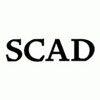
Founded in 1978, Savannah College of Art and Design (SCAD) has campuses in Atlanta, Hong Kong, and Lacoste, France. The school, which serves more than 14,000 students from all 50 states and more than 100 countries, offers more degree programs and specializations than any other art and design university. SCAD houses the School of Digital Media, which has five options for aspiring animators including a BFA in Animation (Atlanta, Hong Kong, Savannah), an MA in Animation (Savannah, eLearning), an MFA in Animation (Atlanta, Savannah, eLearning), and Minors in Animation or Animated Illustration and Publication Design. Both Minor options require 25 credit hours of study.
The BFA in Animation teaches students to master 2D, 3D, Stop Motion, Digital Modeling, Rigging, Lighting, Look Development, and more. The school says students in the program will “collaborate with and take electives in other majors, such as visual effects, motion media, interactive design and game development, sound design, film and television, and sequential art.” Students will graduate from the program as “dynamic, multifaceted” animators, who are “extremely marketable and ready to take the industry by storm.”
The MA is a 45 credit hour program that consists of courses such as Animation Aesthetics and Practice, Art Criticism, Computer-Generated Modeling and Design, Environment Look Development, and 3D Cartoon Character Animation. Students will also complete a Collaborative Project and the Final Animation MA Project, provides students the opportunity to synthesize their learning into a cohesive project piece. Students propose, develop and execute a project that is then cut into their reel.
The MFA requires 90 credit hours of study, with many of the same courses as the MA program. Additional courses include Media Theory and Application, and Storyboarding and Previsualization. MFA students will also complete Animation MFA Thesis Exploration and Research, Animation MFA Thesis Visual Component Production, and Animation MFA Thesis Completion. A Graduate Internship is also part of the program.
Graduates of SCAD’s animation programs have landed positions at major studios such as Walt Disney Animation Studios, Digital Domain, and Bento Box Entertainment.

University of Southern California (USC) was established in 1880. The school serves 47,500 students enrolled in more than 200 undergraduate programs, 300-plus graduate programs, and more than 150 minors. Undergraduate offerings for aspiring animators include a BA in Animation and Digital Arts and a BFA in Cinematic Arts, Film & Television Production with Animation and Interactive Media electives. Graduate offerings include MFA degrees in Animation and Digital Arts and Interactive Media with heavy Animation electives.
Minors in Animation & Digital Arts, 3D Animation in Cinematic Arts, and Game Animation are also available. Course highlights for the programs include Animation Design and Production, Basic Animation Production Technologies, Contemporary Topics in Animation and Digital Arts, Digital Narrative Design, Directed Studies in Animation, Expanded Animation, Expanded Concepts in 2D/3D Animation, Fundamentals of Animation, Storytelling for Animation, The Digital Actor, and 3D Character Performance Animation.
Animation and Digital Arts programs are offered through The John C. Hench Division of Animation and Digital Arts (Hench DADA) of the School of Cinematic Arts (USC Cinematic Arts). The BFA in Cinematic Arts, Film & Television Production with Animation and Interactive Media electives is offered through the Division of Film and Television Production, USC Cinematic Arts.
Graduates of the animation programs at USC Cinematic Arts have landed positions at DreamWorks Animation, Sony Pictures, Nickelodeon Animation Studios, Pixar, Rhythm and Hues, Industrial Light & Magic, Digital Idea, Illumination Entertainment, Digital Domain and many others.
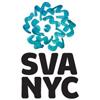
Founded in 1947 as Cartoonists and Illustrators School, the School of Visual Arts (SVA) serves more than 3,700 students enrolled in over 30 programs. With nearly 400 students, 50 faculty and 40 courses Animation is the largest program at SVA. Students have a range of degree options to choose from including BFA degrees in Animation, Computer Art, Computer Animation and Visual Effects, and Cartooning. An MFA in Computer Art (Focus Animation, Motion Graphics or Fine Art) is also available as well as Continuing Education (CE) Animation courses.
The school says all animation students “learn the fundamentals of drawing, storytelling, character development, and professional animation software, as well as the history of animation, all for the purpose of bringing their creations to life.” The curriculum “covers the entire spectrum of animation professions, from traditional animation to stop motion to digital; and access to faculty- and alumni-operated studios provides numerous opportunities for hands-on learning, internships and employment.”
Students have studied and worked at studios such as Titmouse, Augenblick Studios, and Plympton, as well as numerous independent animation studios across New York. SVA animation graduates have gone on to work at major studios such as Blue Sky Studios, Disney Animation Studios, DreamWorks Animation, Lucasfilm Animation, Nickelodeon, Sony Pictures Animation, Warner Bros. Animation, and independent animation studios across the globe.
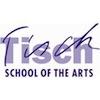
Serving more than 60,500 students, New York University (NYU) is the largest private university in the U.S. Founded in 1831, the school also has the highest number of international students in America with degree-granting campuses in New York, Abu Dhabi, and Shanghai. NYU operates 11 global academic centers and research programs in more than 25 countries. With more than 19,000 employees, NYU is also one New York’s largest employers.
Founded in 1965, Tisch School of the Arts is part of NYU. The school houses the Maurice Kanbar Institute of Film and Television, home of the Department of Animation and Digital Arts. The Institute offers a BFA in Film and Television with an Animation Core in Production and an MFA in Animation and New Media. The two-year MFA program is also offered at Tisch Asia.
The Animation Area of the Kanbar Institute of Undergraduate Film & Television at NYU Tisch School of the Arts began in 1979. The program had just three classes: Art & Design, Animation I, and Animation II. For the 1980-1981 academic year, the program was home to 80 students enrolled in five classes. In 2013, the program enrolled 461 students. Today, the program serves hundreds of students from 48 states and 39 countries.
The school says that the Animation Area at NYU Tisch “serves the needs of all Film and TV students for both animation and live-action projects.” The current curriculum “is varied and integrated with both traditional animation and 2D and 3D animation courses at fundamentals, intermediate and advanced levels, as well as storyboarding, titles, optical and digital effects, life drawing and history and criticism classes.” Nearly 20 courses are offered as part of the program. Highlights include Action Analysis, Animation: From Pitching to Pipeline to Production, Drawing and Design for Animation, Experimental Animation, Life Drawing: Anatomy, Motion Design & Titles, Special Topics in 3D Computer Animation, Stop Motion Animation, Storyboarding, Visual Effects and Compositing, and Writing for Animation.
Other program highlights include internship opportunities, study abroad experiences, and guest speakers. Past guests have included Frank Thomas, Chuck Jones, Jeffrey Katzenberg, Roy E. Disney, George Griffin, David Polonski, Ed Catmull, Amid Amidi, and Willis Pyle, among others.
Graduates of the Animation program at Tisch have landed jobs at Pixar, DreamWorks, Walt Disney Animation Studios and many others.
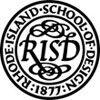
Founded in 1877, Rhode Island School of Design (RISD) is one of the first art and design schools in the U.S. Serving approximately 2,500 students from across the U.S. and 57 other countries, the school has 19 studio majors and leading to bachelor’s or master’s degrees in the Fine Arts, Architecture, Design or Art Education. The school’s most popular programs are Film/Animation/Video (FAV), Illustration, Graphic Design, Painting, and Industrial Design.
The Film/Animation/Video Department offers a BFA in in FAV. Course highlights for the program include Animation Integration/Installation, Computer Animation: Integrated Techniques, Computer Generated Imagery 3d, Digital Effects and Compositing for the Screen, Directing, Film and Video Installation, Film Explorations, Game Development & Programming, Lighting for the Moving Image, Sound for the Screen, Stop Motion Animation, Time, Light and Sound, and Writing for the Screen.
Students in the program can expect to take a range of studio courses such as Animation, Live Action, and Open Media, as well as several Collaborative Study courses and a Professional Internship.
The school reports that RISD alumni can be found working as “entrepreneurs or through studios such as Pixar, DreamWorks or Harmonix, or for networks like Fox, HBO and PBS, where they write, direct, produce, serve as animators, cinematographers, character designers, game designers, lighting specialists, sound artists and much more.”
Famous RISD alumni include Gus Van Sant, director of films such as Good Will Hunting, Finding Forrester, and Milk; Seth Macfarlane, creator of Family Guy, Daniel Sousa, animator and director of the Oscar-nominated film Feral, and Lance Wilder, animator for The Simpsons.

Established in 1997, Gnomon School of Visual Effects has been called the “MIT of Visual Effects” by Fast Company. The school says that it offers a variety of educational options “to help students reach their goals in the entertainment industry, with both degree and vocational certificate programs, specialized courses for high school students and over 100 individual courses for professional enrichment.” The school, which has 600 graduates to date, offers a BFA and a Certificate in Digital Production.
Individual animation courses are available and may be “mixed and matched” to suit students’ career goals. Options include Acting for Animators, Introduction to 3D with Maya, Character Sculpture, Color Theory and Light, History and Principles of Animation, History of Visual Effects, Animation and Visual Effects, Character Animation, Modeling, Motion Graphics, Storyboarding, Texturing and Shading, Timing for Animation, Animation for Games, Character Design, Character Modeling and Sculpting, Previsualization and Animatics, Stylized Character Creation, and Creature Animation.
Gnomon graduates have landed positions at some of the world’s top studios. Walt Disney Animation Studios, Industrial Light & Magic, DreamWorks, Digital Domain, Blizzard Entertainment, Reel FX, Electronic Arts, Sony Pictures Imageworks, Nickelodeon Animation, Rhythm & Hues, and Marvel Entertainment are just a few.

Founded in 1866, the School of the Art Institute of Chicago (SAIC) is one of the oldest accredited independent schools of art and design in the country. The school, which serves 3,700 students from 78 countries, offers more than 50 areas of study from Animation and Costume Design to Visual Communication Design and Writing. The Film, Video, New Media, and Animation Department (FVNMA) offers several programs for aspiring animators including BFA and MFA in Studio degrees with a Concentration Animation, and a Certificate in Studio.
The school says that the FVNMA Department at SAIC “endorses and encourages experimentation with radical form and content.” The Department says that it is “open to many approaches to and understandings of experimental media art” and it is “dedicated” to helping students develop their “art practice in a variety of forms and contexts including the use of high definition video, new media art, experimental 3D animation, hand drawn animation, and filmmaking.” The Department also says that it supports “individual and collaborative forms of making media art in these expanded contexts.”
SAIC FVNMA instructors are “award-winning pioneers,” “revolutionaries,’ and working professionals in the fields of experimental film, video, animation, nonfiction, narrative, installation, glitch, interactivity, art games, curating, archiving, and web-based art projects. Students will also learn from “internationally renowned artists, critics, historians, and curators who regularly visit through the department and SAIC's Visiting Artists Program.”
Other FVNMA Department highlights include graduate projects and fall and spring critique weeks for MFA students, access to world-class resources such as the Art Institute of Chicago Museum, on-campus galleries, and state-of-the-art facilities. Specifics include The Video Data Bank (the leading resource in the United States for videos by and about contemporary artists, The Gene Siskel Film Center), one of the country's premiere screening venues dedicated to promoting alumni, student, and faculty work, and The Donna and Howard Stone Gallery for Film, Video, and New Media in the Art Institute of Chicago's Modern Wing.
Famous SAIC alumni include David Sedaris, Georgia O’Keeffe, Elizabeth Murray, Richard Hunt, Michelle Grabner, Cynthia Rowley, Nick Cave, Jeff Koons, and LeRoy Neiman.

Rochester Institute of Technology (RIT) was born of an unlikely institutional marriage of an influential cultural association, the Rochester Athenaeum (est. 1829), and a technical training school, the Mechanics Institute (est. 1885). The Institute adopted the name Rochester Institute of Technology in 1944 and awarded its first bachelor of science degree in 1955.
Today, RIT serves more than 19,000 students majoring in everything from Art and Design to Urban Community Studies. RIT’s College of Imaging Arts and Sciences (CIAS) is home to the nation’s first PhD in Imaging Science and the School of Film and Animation (SOFA). SOFA offers BFA and MFA degrees in Film and Animation.
The BFA in Film and Animation is one of the most selective majors at RIT. “All undergraduates share the same first semester, where they immediately begin production in both film and animation, ensuring each student is exposed to each form. “This also gives BFA students time to explore before deciding which to pursue,” says the school. Three options are available: 2D Animation, 3D Animation, and Stop Motion.
The 2D Animation Option “begins with character design and progresses through dynamics and sequences. Hand drawing on paper or acetate, using a traditional layering technique, or creating elements originally in 2D software applications are the common options. Then shooting on a crane, bulk scanning the drawings into a computer or animating directly in a software application are the usual production techniques.”
The 3D Animation Option covers all aspects of computer animation. “Modeling in Polygons, NURBs and Subdivision surfaces is taught with an emphasis placed on the need to strike a balance between heavy detail and economy of animation. Other areas covered include, character rigging, set construction, dynamics, character animation, particles, and compositing.
Stop Motion “takes student through all aspects involved in creating stop motion films. Students are taught animating technique, wire armature construction and set construction.”
The Film and Animation MFA is a three-year program “designed to educate complete filmmakers.” Students will “learn the artistic, narrative, technical, historical, and business aspects” of whatever form they choose during the first two years, and then create a thesis project in the third year that can be completed on or off campus. Like BFA students, MFA Animation students will concentrate in either 2D, 3D, or Stop Motion, “but be able to explore the other types of animation.”
The MFA is a terminal degree that prepares students for professional careers in the industry or “teach filmmaking in other higher education programs of merit.” Top careers for MFA graduates include Director, Documentary Filmmaker, Experimental Artist, Producer, and Visual Effects Supervisor. Top careers for BFA graduates include Character Animator, Effects Animator, 3D Modeling and Character Designer, Art Director, and Experimental Film Artist.
Graduates of RIT’s BFA and MFA Film and Animation programs have landed positions at top studios such as Disney Animation Studios, Electronic Arts, DreamWorks, Blue Sky Studios, Nickelodeon, Lucasfilm, Industrial Light and Magic, Paramount, HBO, Rhythm and Hues Studios, and many others.

Founded in 1887, Pratt institute serves more than 4,800 students enrolled in over 25 undergraduate degree programs and concentrations and more than 26 graduate degree programs in its Schools of Art, Design, Architecture, Liberal Arts and Sciences, and Information. The Pratt Institute School of Art offers a BFA in Digital Arts and Animation with an Emphasis in Digital Animation and Motion Arts or Interactive Arts. Concentrations include 2D Animation, 3D Animation and Motion Arts, and Interactive Arts. An MFA in Digital Animation and Motion Arts is also available.
The school says students in the BFA programs will “develop aesthetic finesse, technological skill, conceptual sophistication related to digital media, and thorough comprehension of the potential of art and technology.” Students also learn to create professional documentation and presentation. Graduates of the program “demonstrate an expertise in their discipline, a unique voice in their medium and knowledge of historical works in art and technology.”
Students will create animated films at Myrtle Hall, a LEED Certified Green Building that includes nine state of the art digital studio/classrooms, the Digital Arts Resource Center and Digital Commons flex-space, a High Speed Fibre Channel Network, and Traditional Animation Facilities. An Audio Recording Studio, a Dedicated Green Screen facility, Graduate Studio spaces, 2D/3D Printers and production facility, and the Mediated Digital Arts Gallery are also housed in the building.
Students in the 60 credit hour MFA in Digital Animation and Motion Arts program will have the opportunity to create narrative and non-narrative films using 2D and 3D digital animation techniques, live action and motion graphics. Electives include Storyboarding and Storytelling, Lighting and Rendering, Motion Dynamics, Compositing and Special Effects, Character Design, Character Animation, Matte Painting, and more. Students will complete one year of work on a thesis, which culminates in an exhibition or screening of the completed work and a thesis paper. The MFA in Digital Animation and Motion Arts can be completed in two years.
Pratt School of Art alumni have landed positions at major studios such as Augenblick, Blue Sky, Digital Domain, Cartoon Network Studios, DreamWorks Studios, Curious Pictures, Industrial Light & Magic, Walt Disney Animation Studios, Rhythm and Hues Studios, Walt Disney Animation Studios, Curious Pictures, Gameloft, Sony Imageworks, NBC Universal, Titmouse, and many others.

Otis College of Art and Design (OTIS) was established in 1918 by founder and publisher of the Los Angeles Times, General Harrison Gray Otis. The school serves approximately 1,100 full-time students enrolled in 11 BFA degree programs ranging from Digital Media (Animation, Game and Entertainment Design, and Motion Design) to Toy Design. The school also offers MFA degrees in Fine Arts, Graphic Design, Public Practice, and Writing, as well as a variety of minors and certificate programs.
Specific programs for aspiring animators are offered in the Digital Media Department. Options include a BFA in Digital Media with an Animation Major, a Digital Media Minor, and a Digital Media Arts Certificate with a Specialization Track in Animation. The school says that OTIS Digital Media students will “acquire real-world skills in industry-standard technology, as well as concept development, from leading designers, artists, and entrepreneurs.”
The programs begin with training in “fundamentals of digital tools and their creative applications.” Along the way, students will have the opportunity to find their own visual style. Animation students “bring characters and stories to life through the magic of computer animation. Using a wide variety of techniques, from traditional 2D animation to 3D computer-generated imagery (CGI), students learn to develop narratives that evoke emotion and create the illusion of movement. Special emphasis is placed on storytelling, character design, and acting, as well as traditional drawing skills and business acumen.”
Course highlights include Storytelling for Digital Artists, 3D Animation, The Visual Language of Film, Games and Design, Creative Action Studio, and Animation Explorations.
“By graduation,” says the school, students will be able to “meet the demands of a diverse and expanding job market in visual storytelling for film, television, video games, apps, and the web.
Just a few recent employers of OTIS graduates include Pixar, Disney, DreamWorks, Sony Imageworks, Nickelodeon, Electronic Arts, ILM, Sony Online Entertainment, and Blizzard Entertainment.

Founded in 1900, Carnegie Mellon University (CMU) serves more than 14,500 students representing over 100 countries. The school offers more than 100 programs across seven colleges, including the College of Fine Art, home of the School of Art. The CFA SA offers a BFA in Electronic and Time-Based Media with a Focus in Animation and a BFA in Integrative Design, Arts & Technology (IDeATe) with a Concentration in Animation & Special Effects. A Minor in Animation & Special Effects is also available.
The Electronic and Time-Based Media BFA “explores the creative potential of emerging technologies and the critical impact they have on contemporary culture,” says the school. The curriculum “implicitly encourages cross-disciplinary study.” As such, “many students merge fine art and computer science based interests either within the BFA program or through the unique BCSA degree program.” Besides Animation, students may focus in unique areas such as Bioart, Computational and Interactive Art, Tactical Media, and Tangible Media, as well as Game Arts and Video and Performance. “Students particularly interested in the intersection of art and technology can take advantage of expanded course offerings through the IDeATe Program.”
Students in the BFA in IDeATe with Animation & Special Effects “will study the interconnected components of performance capture, rendering, 3D and 2D animation, and special effects. They will merge arts and technology perspectives in all courses to explore each of these components and the area of digital animation as a whole. Through common repositories across courses and collaborative projects, students will explore how the different components and types of expertise come together to create a convincing computer animated experience.”
Students in this program will also be able to “connect to other IDeATe courses to explore applications of digital animation in different contexts (games, interactive environments etc.) and to integrate other key areas of knowledge (narrative, sound) into digital animation projects.”
The School of Art at CMU also offers supportive courses that “serve to enrich the student experience in IDeATe.” Offerings include Advanced ETB: 2D Animation, Advanced ETB: Animation, Advanced ETB: Moving Image Magic: Visual Effects and Motion Graphics, and Animation, Art, and Technology.

Established in 1929, Academy of Art University serves more than 7,200 students from 112 countries enrolled in dozens of Art, Design, Fashion, and Architecture programs. Degrees are offered at both the undergraduate and graduate levels, and many programs are available entirely online. The School of Animation and Visual Effects offers AA, BFA, MA and MFA degrees in Animation and Visual Effects. A Certificate in Animation and Visual Effects is also available and programs are available on campus and online.
Undergraduate students take classes specializing in one main area of the industry. Emphasis is placed on creating a professional demo reel and/or portfolio in tune with the latest industry trends. Specialization areas include 3D Animation, 3D Modeling, Rigging, Animation Generalist, Animation Producing, Storyboarding, 2D Animation, Puppet Fabrication, Stop Motion Animation, Compositing, Dynamics, Lighting, and Matte Painting. Course highlights include Cinematics for Animation & VFX, Computer Animation Production, Producing for Animation & Visual Effects, Sketching for Communication, and 3D Animation. Students will also complete Senior Portfolio for Animation & VFX, Collaborative Project, and Internship in Animation.
The MA program provides students an opportunity to work in 2D Animation & Stop Motion, 3D Animation, 3D Modeling, or Visual Effects, while focusing on storytelling with an emphasis on exhibiting technical skills and eliciting emotional responses. Students can expect to take courses such as Advanced Character Animation, Feature Animation, Gesture & Quick Sketch for Animators, Storyboarding, and 3D Animation Physics and Mechanics. Students will also complete a portfolio.
The MFA in Animation & Visual Effects program focuses on developing skills in any one of the many areas of expertise within the animation and visual effects industry. The program educates students in all aspects of animation and visual effects, from ideation to post production. Course highlights include Acting for Animators, Perspective for Characters & Environment, Storyboarding for Thesis, 3D Modeling & Animation (Maya), Traditional Animation, and Visual Effects for Animation. MFA students will also take several Directed Study courses and Special Topics, as well as Animation: Thesis Completion, Final Portfolio Preparation and ANM 900: Internship.
Graduates of the animation programs at Academy of Art University have landed positions at Blizzard Entertainment, CBS Interactive, Disney Interactive, DreamWorks Animation, Electronic Arts, Lucasfilm, NBCUniversal, Pixar, and Sony Computer Entertainment America.

Founded in 1907, California College of the Arts (CCA) serves around 1,900 students enrolled more than 30 degree programs. The Animation Department is home to the third largest major at CCA—the BFA in Animation. Students in the program receive guidance from “the best animators in the industry” from Pixar, DreamWorks Animation, and Tippett Studio, among others. Students in the program also receive feedback and visual storytelling advice from actual industry animators and directors of such animated films as Toy Story, Star Wars, and Brave.
With guidance from experienced faculty and industry professionals, students will learn how to make 2D animation, 3D animation, and visual effects for video games, as well as stop motion animation, and more. Course highlights for the program include Animation, Animation: Visual Storytelling, and Drawing for Animation as well as Character Modeling, Character Rigging, Experimental Animation, Intro to Virtual Reality, and Maya for Game and Anima Workshops. Students will also take advanced courses such as Advanced Animation 3D Tips & Tricks, Advanced Rigging, Advanced Sculpture for Animation, and Advanced Visual Storytelling. Junior and Senior projects are also part of the program.
In 2019, the BFA in Animation program began offering a Games Track. The emphasis area is a series of courses that teach the discipline of Game Arts, the fundamentals of Game Design, the process of Games Development, and the nuances of Game Animation. Course highlights include Game Making and Maya for Game and Anima. Animators in the Games Track will produce collaborative and individual works of game art as their capstone projects.
Graduates of CCA’s Animation programs have landed positions at major animation studios such as Walt Disney Feature Animation, Sony Pictures Animation, Pixar, Nickelodeon Animation Studios, DreamWorks Animation, and Cartoon Network. They can also be found at game studios such as Electronic Arts, Phosphor Games, Vigil Games, and many others.
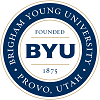
Brigham Young University (BYU) was founded in 1875 by The Church of Jesus Christ of Latter-day Saints (LDS). The school serves around 33,500 students enrolled in 187 undergraduate majors, 110 undergraduate minors, 88 master's programs, and 32 doctorate programs across dozens of colleges and departments. The College of Fine Arts and Communications, Department of Design offers a BFA in Animation and the College of Physical and Mathematical Sciences, Department of Computer Science offers a BS in Computer Science with an Animation Emphasis.
Students in both programs have the opportunity to gain entrance to the BYU Center for Animation (est. 2010), which operates under the direction of three colleges—the Ira A. Fulton College of Engineering and Technology, the College of Fine Arts and Communications, and the College of Physical and Mathematical Sciences. Accepting just 20-25 students each year through the BFA or BS program, the BYU Center for Animation is a competitive, highly dynamic, hands-on program structured to provide students with the skill sets necessary for success in the animation, live-action, special effects, and game industries.
The program attracts faculty members from major studios such as Disney, Pixar, DreamWorks, and Warner Bros.

Established in 1979, Full Sail University serves approximately 15,000 students enrolled in a variety of bachelor’s, master’s, and associate degree programs in the areas of Entertainment, Media and the Arts. Graduate certificates are also available. Options for aspiring animators include a BS in Computer Animation that takes 20 months to complete on campus, and 32 months to complete online.
Students can expect to take courses such as 2D and 3D Animation, Character Animation, Animation Production, Shading and Lighting, Character Rigging, and Visual Development. A total of seven Project and Portfolio courses must be completed as well. They include Project and Portfolio I & II: 3D Arts, and Project and Portfolio III-VII: Computer Animation.
These unique Project and Portfolio courses combine “hands-on learning experiences with summative and formative portfolio assessments.” The courses are taken in addition to an internship, which can be pursued after the student has successfully completed 50% of the required credit hours for the BS program.
Graduates of the programs at Full Sail University have been credited on films such as Ant Man and the Wasp, Avengers: Infinity War, Jurassic World: Fallen Kingdom and Solo: A Star Wars Story, Deadpool 2, Incredibles 2, and many others.

Founded in 1930, ArtCenter College of Design serves approximately 2,250 students representing more than 40 countries. The school offers 11 undergraduate and seven graduate degree programs in a variety of Industrial Design, Visual, and Applied Arts Disciplines. A joint MS/MBA program with the Drucker-Ito School of Management is also available. The school, which has a campus in Berlin, two campuses in Pasadena, and satellite studios in Los Angeles at the Peterson Automotive Museum, offers a degree in Entertainment Design with three tracks: Animation, Concept, and Game Design.
The Animation Track develops students in the disciplines of character animation, storyboarding, modeling, art direction, and lighting for 3D and 2D animation, while the Concept Track focuses on the skills and creative ability required of entertainment industry concept designers. Game Design prepares students to create and convey game concepts through prototyping and production for multiple platforms. All tracks lead to a BS in Entertainment Design.
Entertainment Design graduates are prepared for career opportunities as performance and action animators with companies such as Pixar, Disney, DreamWorks, ILM, Sony, Blur, 343 and Riot.
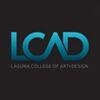
Laguna College of Art and Design (LCAD) was established in 1961 as the Laguna Beach School of Art. The school serves 670 students enrolled in five BFA and two MFA programs. With 177 students enrolled, Animation is the largest program at LCAD. Game Art is the second largest with 168 students.
The school says animation students “will become skilled at shaping compelling frame-by-frame performances that inspire viewers to accept that the characters on screen are alive with genuine thoughts and sincere emotions.” The school also says that it is dedicated to ensuring that students become exceptional storytellers who understand the entire process of filmmaking from script to screen.
Students will develop their “abilities in traditional animation with classic artistic skills and then enhance that knowledge with fluency in the latest digital tools.” Taught by “experienced industry professionals,” courses for the program include Animal Drawing, Background Painting, CG Animation, CG Modeling, Character Design, Directing for Animators, Figure Drawing, Layout, Perspective, Professional Studies and Visual Development for Animators. Students will also complete a Thesis.
The Animation BFA provides the opportunity for students to participate in master class workshops each summer where they learn from leaders in the field. Each year, LCAD also hosts the LCAD Animation Film Festival known as LAFF, which showcases the best work from all levels of (the schools) animation artists.
LCAD Animation graduates have landed positions at Cartoon Network, Disney, DreamWorks, Fox, Industrial Light & Magic, Laika, Mattel, Nickelodeon, Obsidian Entertainment, Pixar, Renegade Animation, Sony, South Park Studios, The Jim Henson Company, Titmouse, and Warner Bros.

Established in 1898, DePaul University serves nearly 22,500 students from across the U.S. and about 70 countries. The school offers 300 programs of study across 10 colleges and schools and two campuses in Chicago. The College of Computing and Digital Media (CDM) houses the School of Cinematic Arts, home of the animation program. With more than a dozen full-time animation professors, the school has one of the largest full-time animation faculties in the U.S.
Program options for aspiring animators include BA, BFA, MA, and MFA degrees in Animation. Several concentrations are available including Game Art, Traditional Animation (hand drawn and stop motion), 3D Animation, Storyboarding and Character Design, Technical Artist, and Motion Graphics. A VFX Concentration is also available within the Film and Television BFA and the school offers a Game, Cinema and Animation Summer Academy for high school students interested in animation, with tracks in Hand Drawn, Stop Motion, and 3D Animation for Games.
The BA in Animation “emphasizes the art of animation, creativity, and critical thinking—while encouraging experimentation in form, content and medium—within a broad Liberal Arts context.” To develop their animation skills, students will produce live action videos, draw web-based shorts inspired by Hollywood or anime, or design motion graphics for film titles and commercials.
Designed for students who are serious about careers as animation artists, character animators, game artists, CGI effects animators, and motion graphics animators, the BFA in Animation provides a “thorough foundation in the art of animation and its history, combined with intense practice in traditional animation (hand drawn, stop motion, and hybrid), and 3D computer animation and modeling.
The MA in Animation “provides a combination of artistic and technical training that prepares students for a future in 3D character animation, traditional animation, computer game art, or visual effects.” The MFA in Animation is the “premier degree” of the graduate program. It’s designed for students who are interested in “creating original animated films and artwork as their main vocation, and is the terminal degree in the field.”
DePaul Animation students can apply to participate in the Animation Summer LA Quarter. This ten-week immersion program is structured around living in student housing, taking classes on a historic studio lot, and interning at high profile animation studios. The experience teaches students how to navigate the studio system and helps them build a network of professional contacts. Past participants have interned at Warner Brothers, DreamWorks Animation, Sony Studios, Disney, Nickelodeon, The Mill, The Jim Henson Company, Titmouse Animation, Bix Pix Animation, and others. Back at home, students will also benefit from CDMs relationship with Chicago’s largest game development and animation studios.
Graduates of the Animation programs at DePaul have been hired in animation roles at DreamWorks Animation, Laika Studios, Google, Blizzard Entertainment, Phosphor Studios, Wargaming, Nickelodeon, Electronic Arts, and Synapse Games, to name a few.

Established in 1879, Columbus College of Art and Design (CCAD) is one of the oldest private art and design colleges in the United States. The school serves more than 1,300 students enrolled in 12 BFA programs and MFA and MDes programs covering a broad range of subjects and practice areas. Programs for aspiring animators include an Animation BFA with 2D and 3D Tracks or a Concentration in Animation/Experimental or Animation/Game. Minor options include Animation 2D and Animation 3D. An MFA program is also available. Students in this program have executed individual projects from animation and video to interactive design and illustration.
All students may participate in CCAD’s International Exchange Program, which highlights study at China Academy of Art, Hangzhou, China; Universidad Mayor, Santiago, Chile; Xi’an Fine Arts Academy, Xi’an, China, and Northumbria, Newcastle, England. Students may also study at CCAD-approved programs at Studio Art Centers, Florence, Italy, and University of Arts London, London.
Graduates of the CCAD Animation BFA Program have landed positions at Animal Logic, Pixar, Walt Disney Animation Studios, DreamWorks, Cartoon Network, Electronic Arts, Nickelodeon Animation Studios, Sony Pictures Animation, BET, Time Warner, Twentieth Century Fox, and many others.

Established in 1890, Columbia College serves more than 7,300 students from nearly every state and more than 60 countries. The school has over 100 academic majors or programs across several schools and more than 20 departments. Schools include the School of Media Arts, the School of Fine and Performing Arts, and the School of Liberal Arts and Sciences. The School of Media Arts is home to the Interactive Arts and Media Department, which offers three programs for animators: a BA in Animation and a BFA in either Computer Animation or Traditional Animation.
The school says that the Animation BA might be the best option for students interested in exploring multiple animation techniques (hand drawn, stop motion, computer, experimental) and taking on a minor or second major. Just a few minor options include Motion Graphics, Game Art, Programming, and Video Production. The BFA allows students to specialize within their area of animation interest and complete two animated films by the final year of the program.
Sample courses for the programs include Acting for Animators, Alternative Strategies in Animation, Animation for Comics, Animation Layout, Animation Maquettes, Animation Portfolio Development, Animation Production Studio, Cartooning, Cinematics for Games, Character Design and Modeling, Computer Animation: Visual Effects, Digital Animation Techniques, Drawing for Animation, Environmental Design & Modeling, Figure Drawing, Storyboarding for Animation, and The Business of Animated Content.
Students in all programs have the opportunity to either work collaboratively with peers to create a six-minute animated film over two semesters or take any three Animation electives of their choosing. Computer Animation BFA students will collaborate on a team project and develop their own solo short film.

Founded in 1988, DigiPen Institute of Technology was the first school in the world to offer a bachelor’s degree in Video Game Development. More than 550 companies have hired DigiPen graduates and the school is located near more than 400 interactive media companies, making the region one of the largest video game centers in the world. The school, which serves around 1,100 students from all 50 states and close to 50 countries, has international campuses in Singapore and Spain along with educational partnerships with Keimyung University in South Korea and Thammasat University in Thailand.
DigiPen offers ten graduate and undergraduate program options in the areas of Art, Design, and Computer Science. Offerings for aspiring animators include a BFA in Digital Art and Animation and an MFA in Digital Arts.
The BFA program is designed to prepare students to create artwork at the professional level. In addition to excellent drawing skills, students will gain production experience, familiarity with modern studio processes, and storytelling abilities. Sample courses for the program include Animation, Human Anatomy, Art and Technology, Storytelling, Storyboards, 2D & 3D Animation, Cinematography, and Conceptual Illustration and Visual Development.
A core component of the BFA curriculum is Multidisciplinary Team Projects, which the school says provides the opportunity for students to “contribute on collaborative endeavors in student games, animated films, and more.” The semester- and year-long projects give students the opportunity to “see a project through from the concept stage to final, polished product.” Potential careers for graduates include Animator, Character Artist, Environmental/Asset Artist, Producer, Simulation and Effects Animator, UI Designer, and many others.
In addition to the Redmond campus, the BFA in Digital Art and Animation is available at the school’s international branch campuses including Digipen Europe-Bilbao and Digipen Singapore.
The MFA is a terminal degree program that allows students to build on their foundation and “expand beyond traditional arts.” Students will hone their craft in digital media and build proficiency in subjects such as digital sculpting, digital painting, character design, and other specializations within the digital media industries.
The MFA culminates with an advanced thesis project that allows students to develop and showcase an original body of work that is both personal and reflective of their strongest capabilities as a digital artist. Graduates of the program are prepared to seek positions in both academia and production. Possible roles include Animator, 3D Modeler, Character Artist, Senior Animator, Senior Character Artist, Texture Artist, and Professor of Fine Arts.
Graduates of the Digital Art Programs at DigiPen have been hired at companies such as Activision, Blizzard Entertainment, Disney Online, Electronic Arts, Microsoft, and more.

Founded in 1876, University of the Arts (UArts) is one of the nation’s only comprehensive arts university. The school serves 1,900 students enrolled in 47 undergraduate and graduate programs on the University's campus at the center of Philadelphia's vibrant Avenue of the Arts.
Programs, including more than 30 minors, are offered through the Colleges of Art, Media & Design and Performing Arts, and the Divisions of Liberal Art and Continuing Studies.
The College of Art, Media & Design houses the School of Film, which offers BFAs in Animation and Film + Animation, and a Minor in Animation. The school says that the BFA program “supports traditional hand drawn, 3D computer, stop motion and any animation techniques that can be imagined or explored.” Students in the program will explore the variety of techniques available to the current animator, hone traditional skills, and learn how to tell engaging stories as well as create memorable characters, and bring their concepts to life.
Besides taking courses such as Drawn Character Animation, Screenwriting, Special Effects Compositing, Storyboarding, and 2D Computer Character Animation, BFA students will create a Junior and Senior Animation Piece, an Animation Thesis, and an Internship.
The BFA in Film + Animation “allows students to explore the possibilities of both film and animation.” Students in the program will study “film and animation techniques, explore various genres and styles, and create a capstone project that combines film and animation in innovative way.” Other program highlights include hands-on instruction by “award-winning, professional filmmakers and animators,” production workshops, lectures, screenings and critiques, and internship and study abroad opportunities. In addition to study abroad, international opportunities include festivals and workshops in countries such as Canada, France, and South Korea.
UArts animation alumni work on blockbuster special effects films, animated television series, commercials, and video games in a variety of roles–from director to animator to storyboard artist to editor to many other positions.

Founded in 1740, the University of Pennsylvania (UPenn) is one of the nation’s oldest universities. The school serves 25,860 students enrolled in more than 400 programs across 16 schools. Programs for aspiring animators are offered through the School of Design-Department of Fine Arts and the School of Engineering and Applied Science. The School of Design-DFA offers a BFA in Fine Arts with an Animation or 3D Modeling Studio. The program combines studio practices, seminar courses, and interactions with visiting artists and professionals in order to provide an open intellectual framework to foster critical awareness and independent methods of artistic research and learning.
The School of Engineering and Applied Science is home to the Digital Media Design Program, which leads to a Bachelor’s in Engineering and Science (BSE) with a Digital Media Design Major (DMD). The School also houses the Center for Human Modeling and Simulation (HMS), which offers a Computer Graphics and Game Technology Program (CGGT), which leads to an MS.
Created in 1998 to educate a new generation of people to work in computer graphics, the interdisciplinary BSE DMD program was designed for students who have an interest in computer graphics, animation, games, and the design of virtual reality environments and interactive technologies. A Digital Media Design (DMD) Minor, and a PhD in Human Modeling and Simulation (HMS PhD) are also available. BSE DMD students go on the work at major studios such as Walt Disney Animation, DreamWorks Animation, Electronic Arts, Microsoft, Pixar, and Zynga Games. These are the largest employers of UPenn DMD graduates.
The Center for HMS established the CGGT program in 2004 with a goal to expose recent graduates, as well as individuals returning from industry, to state-of-the-art graphics and animation technologies, as well as interactive media design principles, product development methodologies and engineering entrepreneurship.
The CGGT program prepares students for positions requiring multidisciplinary skills such as designers, technical animators, technical directors and game programmers. Students in the CGGT program use the equipment and resources available through the SIG Center for Computer Graphics. Opportunities for specialization are provided in such core areas as art and animation, creative design, animation and simulation technology, human/computer interfaces and production management.

Minneapolis College of Art and Design (MCAD) was established in 1886. The school, which shares a block with the Minneapolis Institute of Art, serves more than 800 students from 45 states and 15 countries. Of these, 50% are enrolled in Design, 38% in Media Arts, 10% in Fine Arts, and the remaining 2% in MCAD's new Arts Entrepreneurship Department.
MCAD offers more than 20 programs across several departments including Animation. Degrees include a BFA in Animation and an MFA in Visual Studies. The school says that the BFA Program consists of rigorous foundation studies and collaborative projects that allow students to “expand their work” and “move into the world beyond with visual communication skills and up-to-date technical proficiencies.”
Course highlights include Stop Motion Animation, Character Animation, 3D Animation, 3D Modeling, Filmmaking, Storyboard, Sound, and Drawing. A required internship is also part of the program as well as optional study abroad experiences in Japan, Germany, England, Italy, and other places. MCAD students have interned at Nickelodeon, MTV, Walker Art Center, and Massachusetts Museum of Contemporary Art.
Housed in an all-MFA studio and gallery space, which includes fifty individual studios, smart classrooms, facilities for creative making, and a large gallery space, the 60 credit hour MFA Program allows students to pursue creative work in areas such as Animation, Comic Arts, Filmmaking, Illustration, Installation Art, and Web and Multimedia. Other program highlights include an internship, study abroad opportunities and the Master’s Trip to NYC. During the trip, students and alumni will visit artist studios, art and design venues, agencies, and more.

Established in 1911, Loyola Marymount University (LMU) serves around 9,680 students enrolled in nearly 180 major, minor, master’s degree, and doctoral programs through seven colleges and schools. The School of Film and Television is home to LMUs Animation Program, which leads to a BA. The School of Film and Television also offers an Animation Minor that is available to all students, regardless of major.
The cross-disciplinary BA in Animation “supports the creative vision of each student, providing a safe space for you to grow as an artist,” says the school “Fostering the collaborative filmmaking process is essential, too–you can see teamwork in action in the animation labs, with students actively creating their collective projects. And state-of-the-art networked computer workstations allow them to collaborate with ease.” Students in the 120 credit hour program benefit from hands-on experience and small class sizes that “encourage a high degree of student-faculty interaction in coursework including Visual Effects, Stop Motion, Experimental Animation, 2D and 3D, and Game Design.”
During the final years of the program, students will complete an Animation Internship that provides the opportunity to gain valuable experience in the field. Also during the senior year of the BA program, students will write, animate and direct a thesis film/project for their portfolio.
The Animation Minor is an 18 credit hour program consisting of History of Animation, Introduction to 3D Computer Animation, Introduction to Interactive Animation, Beginning Animation Workshop, Visual Story Development, and three elective courses (9 semester hours), chosen from 300 and 400 level Animation courses under the direction of the Chairperson.
Graduates of the Animation programs at LMU will “have a unique personal artistic vision and work effectively in a collaborative filmmaking process.” They will also become “active leaders in the new emerging industries, whether it will be in the studio system or as independent artists.”

Drexel University was established in 1891. The school serves nearly 29,000 campus and online students enrolled in over 200 degree programs across 15 colleges and schools. The Westphal College of Media Arts & Design is home to the Digital Media Department, which offers a BS and a Minor in Animation & Visual Effects. MS and PhD degrees in Digital Media are also available.
The BS in Animation & Visual Effects gives students the “technological, story-telling and design skills to succeed as animators and visual effects artists in the highly competitive entertainment and design worlds,” says the school. “Over the course of their education in the program, students will pursue a foundation of design and technology by taking core courses in all aspects of digital media while delving into coursework covering many areas of specialization.”
The program consists of 51 credits of core courses, 45 hours of general education courses, 27 elective credits, 24 credit hours of art and art history requirements, 18 credits of animation requirements, 15 credits in media and computer science, and six credits of animation electives.
The Animation & Visual Effects program features a six-month co-op, where students will “learn the underlying principles of animation along with industry-standard software technology. The entire creative pipeline from storyboarding through modeling and animation is covered in-depth, allowing students to experience all aspects of production.”
The two-year MS in Digital Media is a hybrid program that offers comprehensive studies in Advanced Digital Design including 3D Modeling, Animation, Interactivity, Gaming and Digital Media History, and Theory and Methods. The curriculum for the two-year program “offers a mix of academic course work and project-related activities. Projects consist of funded grant research opportunities, industry-sponsored projects and independent, student-generated and faculty-approved projects.”
The PhD in Digital Media “focuses on translational research in digital media within an experiential learning environment. It studies the application of digital media towards solving research problems in various disciplines including but not limited to engineering, education, cultural heritage, health or business. This doctoral program is built on a fundamentally interdisciplinary course structure and emphasizes an iterative and design based research philosophy.”
PhD students have the same project opportunities as MS students. Past projects for the programs have included Brain-Computer Interfaces (BCI) for video games, theme park ride and animation design, interactive online non-linear narrative comics, advanced animation production techniques, a multi-media interactive dance performance with body tracking, and multi-touch games for teaching middle-school children.
Graduates of the Westphal Animation and Digital Media programs at have landed positions at leading companies such as Pixar, DreamWorks, Microsoft XBOX, Disney, NCSoft, and many others.
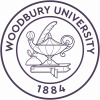
Founded in 1884, Woodbury University is one of the oldest institutions of higher education in Southern California. The school, which serves nearly 1,200 students, has campuses in Los Angeles/Burbank and San Diego. The school also has a Gallery called WUHO Gallery in Hollywood.
Woodbury offers 26 practice-based, fully accredited professional and liberal arts undergraduate and graduate majors through four colleges and schools including the College of Liberal Arts, the School of Architecture, the School of Business, and the School of Media, Culture & Design. The School of Media, Culture & Design houses the Animation BFA Program.
Because Woodbury promotes “cross-disciplinarity,” animation students may study in other areas such as Game Art & Design, Media Technology, and Filmmaking. Students may also participate in Woodbury’s internship program and the Animation Club, which hosts events, speakers, and exhibitions. Internship opportunities include positions at Cartoon Network, Nickelodeon, DreamWorks, Warner Bros., Chiodo Bros., Bix Pix Entertainment, Blur Studios, Walt Disney Imagineering, Walt Disney Animation, Renegade Animation, Hasbro Studios, and others.
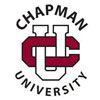
Founded as Hesperian College in 1861, Chapman University is home to more than 8,500 students from 49 states, two territories, and 82 different countries. Chapman offers 110 areas of study across nine colleges and schools, including Dodge College of Film & Media Arts. The College offers a BFA in Animation and Visual Effects with a focus in 2D or 3D Animation or Visual Effects.
This hands-on program is divided into two parts. The first two years are devoted to the fundamental artistic and technical skills that provide the foundation for the student’s development as an animation or VFX artist. During the junior and senior years, students will focus on their chosen area of specialization and the development and production of the senior thesis project.
Other program highlights include access to the state-of-the-art Digital Media Arts Center (DMAC), which provides “24/7 access to an art studio, an animation lab with both traditional animation pegged drawing discs and digital Cintique tablets, a VFX lab with dual monitors and a 4K workflow, individual digital suites with specialized 3D and sound gear.” The “spaces feature the latest industry standard software such as Adobe Creative Suites, Maya, 3DS Max, and an Xsens motion capture suit and software.”
Through field trips to, and internships with major gaming, VFX, and animation studios, students in the program will stay connected with the industry. Students have explored or interned with Pixar, DreamWorks, Blizzard, and Blur. In addition, “major industry players and professionals such as Joyce Cox (The Jungle Book), Chris Buck (Frozen), Don Hahn (Lion King, Beauty and the Beast), Randy Cook (Lord of the Rings), Pete Docter (Inside Out), Rob Liefeld (Deadpool), and many more frequently visit campus.”
Another benefit of the Animation program at Chapman’s Dodge College is the International Program. In the past academic year, Dodge College students traveled abroad to 10 countries, including Laos, Malawi, Ireland, and South Korea. In recent years, students have traveled to more than six continents and 20 countries including Asia: India, Japan, Singapore, South Korea, Taiwan; Europe: England, France, Iceland, Italy; Africa: Botswana, Burkina Faso, Cameroon, Ghana, Mozambique, Uganda, Tanzania; South America: Peru; Australia, New Zealand and Cuba, as well as several cities in North America.

Founded in 1906 as the Detroit Society of Arts and Crafts, the College for Creative Studies (CCS) serves more than 1,400 students enrolled in over a dozen degree programs across 14 academic departments. Serving 285 students, Entertainment Arts is the school’s largest department. Here, students can earn a BFA in Entertainment Art with a Concentration in Animation that allows students to “develop character performance within a variety of 2D and 3D applications,” says the school.
Students will hone their skills in “traditional and computer-generated (CG) animation and design and gain experience in stop motion, motion graphics, and experimental media.” Course highlights for the program include 3D Techniques, Drawing: Visualization, Gesture Drawing, Computer Character Animation, Lighting and Rendering, Visual Narration, Experimental Animation, Sound Design, Digital filmmaking, and Advanced Story Concepts.
All Entertainment Art students will have the opportunity to customize their curriculum by taking coursework in other concentrations such as Digital Film or Game Design. Students will also complete a Writing Workshop, Senior Production Studio, and an optional internship.
Graduates of the CCS Animation Program work throughout the industry as animators, designers, fabricators, storyboard artists and visual development artists. Graduates have been hired at major studios across the U.S. including Sony Pictures Imageworks, DreamWorks Animation, and Disney ABC Television Group, to name a few.
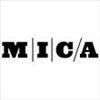
Founded in 1826, Maryland Institute College of Art (MICA) is the oldest independent, continuously degree-granting college of art and design in the U.S. The College enrolls nearly 3,500 undergraduate, graduate and open studies students from 49 states and 52 countries. Around 80 programs leading to the BFA, MA, MFA, and MPS degrees are available in the areas of fine arts, design, electronic media, art education, liberal arts, and professional studies. Post-baccalaureate certificate programs are also offered.
Programs for aspiring animators are offered through the Animation Department and include a BFA in Studio with a Concentration in Animation. Three pathways are available including Traditional Narrative/2D, Stop Motion, and 3D Animation. Students begin with a fundamental understanding of the art of movement. They work in 2D hand drawn animation, 3D computer imaging, stop motion, and history of animation and innovative combinations of these processes, culminating in a thesis film in their final year.
MICA also offers a BFA in Animation + Humanistic Studies. In addition to animation studies, students in this degree program will study philosophy and ethics, social and natural sciences, and social and political history. Sample courses for the program include Character Animation, Elements of Visual Thinking, Digital Tools For Animation, Stop Motion, Electronic Media & Culture, Art Matters, and Drawing.
Graduates of MICA animation programs work for companies like Blue Sky Studio, Disney, DreamWorks, Yahoo, Laika, and MTV. Many graduates have continued their education in graduate programs or have successful careers as freelance artists in the field.

Established in 1824, Rensselaer Polytechnic Institute (RPI) serves nearly 8,000 students enrolled in more 100 degree programs through five schools. The School of Humanities, Arts, and Social Sciences (HASS) houses the Department of Art, which offers BS, MFA, and PhD degrees in Electronic Arts (EART).
The school says undergraduate students in the Arts have the opportunity to express themselves with a variety of media from fine art and music to experimental video and animation. Students will select from several concentrations within the BS EART degree to suit their interests. Options include Visual Arts & Animation, Computer Music & Sound Art, Video and Emerging Media, and Art, Technology & Culture.
The Department of Art is a partner in several other cutting-edge majors at Rensselaer, such as Information Technology and Games and Simulation Arts and Sciences. Even if the student is not an arts major, they can still exercise their creativity with one of the schools arts minor programs.
The school says that the BS in EARTS degree is designed to support either a single or dual major option. It is intended for students who want to critically and creatively explore the arts at the intersection of the humanities, and the physical, computational, engineering, and social sciences.
The MFA in EARTS, which is being redesigned, is for students pursuing artistic and academic careers emphasizing electronic media. The 60 credit hour program allows students to create independent works such as multimedia presentations, computer-generated or mediated images, videotapes and installations, performance art, and musical compositions and performances. Graduates of the BS and MFA programs are prepared to seek positions in animation, multimedia arts, design, research, and more.
The school says that the PhD in EARTS was established in 2007 to “fulfill increasing demands for a practice-based interdisciplinary arts doctoral degree within academe [the university], as well as to appeal to students who wish to pursue innovative research that integrates diverse media, performance, science-based and/or social practices, and curatorial studies into their artwork.”
The core of the curriculum focuses on the student's creative practice, which is informed by coursework, individual attention from advisors, and culminates in a dissertation that is composed of the dissertation text and practice-based work. Graduates are prepared for academic positions in research-intensive fine arts settings, as well as visual culture, musicology/sound studies, cultural studies, humanities and media studies programs. They are also prepared for careers as artists, composers, curators, and administrators in galleries, museums, performing arts organizations, artist-run centers, and art-science programs and projects.
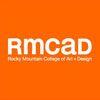
In 1963, well-known illustrator and educator Philip J. Steele founded Rocky Mountain School of Art, which later became Rocky Mountain College of Art and Design (RMCAD). The school serves 760 students enrolled in 16 degree and certificate programs offered in campus/hybrid and online formats. More than 100 students are enrolled in the schools Animation Program. Options include a BFA in Animation with an Emphasis in 2D or 3D Animation, and Certificates in 3D Animation: Pre-Production or 3D Animation: Character Animation.
Animation program highlights include Drawing (2D) or Advanced Software (3D) Concentrations; Stop Motion, Anatomy and Figure studies; Modeling, Character Design, Virtual Environments, and Storyboarding, and Line of Action. The BFA program takes four years to complete.
The Certificate programs consist of 18 credit hours of study. Certificate program highlights include Fundamentals of Animation, 3D Computer Animation Motion Studies, 3D Character & Production Design, Game Animation + Motion Capture, Advanced Character Creation Methods, and Advanced Computer Animation Motion Studies.
Graduates of RMCAD’s Animation BFA Program are prepared to seek positions such as Flash Developer/Designer, New Media Designer, Digital Videographer, 3D Artist, Character Developer, and many others. RMCAD graduates have landed positions at Pixar, Blue Sky Studios, Lola VFX, and Industrial Light & Magic, to name a few.

Established in 1885, Kansas City Art Institute (KCAI) trained students such as Walt Disney (who took Saturday Classes as a child), and multimedia artist Robert Rauschenberg. Today, the school serves more than 700 students, enrolled in 15 program areas through several departments. The Department of Converging Media houses the school’s animation program, which leads to a BFA. Double Majors in Art History and Animation and Creative Writing and Animation are also available.
The Animation BFA highlights intensive instruction in classical, experimental and computer animation. Students in the program work in technologically integrated classrooms and studios to produce a significant personal work. The Department of Converging Media houses Filmmaking, Interactive Arts, and Photography, so animation students also work in an environment that facilitates creativity and cross-disciplinary approaches to image making.
The school says, “sequential classes emphasize the creative process by combining aspects of animation principles, concept modeling, production methods, history, theory and technique into each project.” Course highlights include Creating the Environment, Digital Methods, Drawing for Animators, Explorations in Animation, Ideas in Motion, Intermediate 3D, Principles of Animation, Sound for Screen and Space, and Visual Communication. Students will also complete Professional Practice and Studio I & II as well as The Senior Graduation Animation Project, which prepares them to enter the field with practical experience and a competitive portfolio.
In addition to the Senior Project, BFA students will gain experience through internship opportunities at major studios such as Walt Disney Animation Studios, DreamWorks, Digital Domain, Nickelodeon, Hallmark, Bazillion Pictures, Titmouse Inc., and many others.

Founded in 2000, The Digital Animation & Visual Effects School (Dave School) is a 35,000 square foot facility located on the backlot of Universal Studios Florida, Soundstage 25. The school offers intensive and “comprehensive training” in 3D Modeling, 3D Animation, 3D Visual Effects, and Game Production. Programs for aspiring animators include a Bachelor’s degree in Animation or Motion Graphics, and a Diploma and Associate Program in Visual Effects Production or Game Production.
The Bachelor’s in Animation is a 30-month program “provides students with a practical application to the animation process.” Students in the program will learn and understand acting for animators, body and facial animation, character rigging, creature animation, drawing for animators, previsualization, principles of movement, rigging, visual storytelling, and performance using a variety of software.
The 30-month Bachelor’s in Motion Graphics introduces students to 3D Modeling and Animation for Motion Graphics. Students in the program will learn and practice the principles of Animation, Compositing, Composition, and Design. The 12-month Game Production Program covers Fundamentals of Computer Animation, Character, Prop and Environment Modeling, Level Design, Visual Effects, and Digital Modeling and Sculpting.
The 12-month Visual Effects Program covers 3D Animation, Digital Compositing, 2d/3D Tracking, Digital Modeling & Sculpting, Visual Effects, Studio Production, Lighting and Texturing, and Animation Fundamentals. Programs are offered either online, on-campus or in hybrid format.
DAVE school graduates and instructors have worked on major productions such as The Hunger Games, Green Lantern, Game of Thrones, Terminator Genisys, Jurassic World, Captain America, The Hobbit, Godzilla, and many others.

The New School was founded in 1896 by American Impressionist William Merritt Chase. Back then, the school was known as The Chase School, and later as New York School of Fine and Applied Art. Today, known as The New School/Parsons, this art and design college serves nearly 6,000 students enrolled in 130 degree and diploma programs across five schools including the School of Art and Design History and Theory, School of Art Media and Technology, School of Constructed Environments, School of Design Strategies, and the School of Fashion.
Program options for animators are offered through the School of Art, Media, and Technology (AMT) and include BFA and MFA degrees in Design & Technology. Pathways include Creative Technology and Game Design. Minors in Immersive Storytelling and Comics and Graphic Nature are also available, as well as a related program—the BFA in Art, Media, and Technology, offered at the Parsons Paris Campus.
According to Parson’s, the BFA Creative Technology pathway “focuses on methods of combining physical computing, creative coding, user experience, responsive environment, and immersion technology for innovative design solutions.” The Game Design pathway “emphasizes the aesthetic aspects of designing games.” It provides a set of tools that grows along with students’ skills and provides them with an understanding of the game design process, from brainstorming to game publication.
Students in the program will visit industry leaders like the Rockwell Interaction Lab, Eyebeam Art and Technology Center, MTV, Nickelodeon, and Curious Pictures. Other industry partners include Apple, Atari, Human Rights Watch, MTV, Siemens, and UNESCO. Students also have access to the university’s extensive libraries, galleries, and state-of-the-art facilities that help students engage their creativity and enable them to showcase their work.
Graduates leave the program prepared for careers in advertising, animation, film, game design, graphic arts, hardware engineering, motion graphics, software design, and virtual reality and immersion experience design.
The full-residency, two-year MFA program is studio based with areas of practice including interaction design, physical computing, game design, new media art, digital fabrication, data visualization, and critical design. In Collaboration Studio courses, students work on real-world projects with industry firms and nonprofits. Past partners include Red Bull, Intel, Apple, Eyebeam, gameLab, Human Rights Watch, Mozilla, NASA, the Red Cross, Samsung, the Whitney Museum of American Art, and the Metropolitan Museum of Art.
MFA graduates go on to establish careers in mobile and application design, Web, UI and UX design, interaction design, new media art, game design, motion graphics, 2D and 3D animation, and digital filmmaking.

Established in 1882, Cleveland Institute of Art (CIA) is an independent college of art and design that serves 645 students from 32 states and nine countries around the world. The school offers 15 majors in the Fine Arts, Design, Craft, and Interactive Media. Programs for aspiring animators include a BFA in animation that has an integrated curriculum focusing on sequential narrative storytelling, methods of animation, conceptual development, framing and staging, storyboarding, animatics, layers, and motion and figure studies. Students can expect to take courses such as Advanced 3D Animation, Mapping, Digital Lighting, 2D/3D Compositing for Animation, 3D Texture, and Concept Development.
The CIA Animation Program prepares graduates for positions such as Animator, 3D Character Animator, Storyboard Artist, Independent Filmmaker, Concept Artist, and Game Designer.
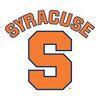
Syracuse University (SU) was founded in 1870. The school serves nearly 22,500 students from across the U.S. and 126 countries. The school offers more 200 majors, 100 minors, and 200 advanced degree programs across 13 schools and colleges. The College of Visual and Performing Arts (VPA), Department of Transmedia offers several programs for aspiring animators. Offerings include a BFA in Computer Art and Animation, an MFA in Computer Art, and a Minor in Animation.
The 120 credit hour BFA in Computer Art and Animation “explores the possibilities of digital media within a fine art, exploratory, and culturally aware setting,” says the school. The degree program provides instruction in multiple art media where the computer plays the primary role. These media include computer-generated images, 3D computer animation, physical computing, creative computer programming, computer gaming, computer music, and sonic art. Students are mentored to become highly skilled critical thinkers producing art in individual and collaborative contexts.
The 60 credit hour MFA program “is an artistic research and development program situated in the context of technology where students are encouraged to develop a diverse set of practices within computer art.” The program covers computer generated imagery, 3D computer animation, physical computing, creative computer programming, computer gaming, computer music, visual effects, multi-channel installation, and sonic art.
Students in the program “are expected to develop a strong record of professional practice in a variety of contexts, including exhibition, screenings, public intervention, installation, performance, workshops, gaming events, and viral media, among other forms of public engagement.” Students can expect to complete the MFA program in three years.
Students in both the BFA and MFA programs have access to study abroad programs in 60 countries throughout the world, enabling them “to gain a global perspective as they pursue their studies.”
VPA animation graduates have found employment at major studios such as Pixar, Rhythm and Hues, Industrial Light and Magic, LucasArts, Blizzard Entertainment, Tippett Studios, Moving Picture Company, and Sony Pictures Imageworks. Graduates have also presented their work at galleries and media art festivals around the world.
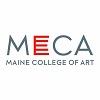
Maine College of Art (MECA) was founded in 1882 as part of the Portland Society of Art. The school serves around 550 degree-seeking students and 1,500 continuing studies students. The school offers BFA, MFA, MA, and Certificate programs, including 11 majors in the BFA program. Among the BFA programs is the Animation & Game Art (AG) Major.
Launched in 2018, the school says that the AG Major is “designed on the premise that in order to effectively tell a story, animators must understand screenwriting, character development, cinematic structure, narrative and composition, and be able to effectively convey the emotions and motivations of a character by mastering skills in drawing, modeling, timing, and gesture.” To develop these skills students will work in studio-like settings to create works and take courses such as Cinematic Storytelling, Character Design for Games & Animation, and Intro to 3D Modeling & Animation.
Students will also take Special Topics: Stop Motion Product and complete the Major Capstone Production. “The program’s dual emphasis on developing both individual exploration and collaborative practices prepares graduates for lifelong personal and professional creative practice. Internships and Professional Studio Courses prepare students to competitively enter the professional marketplace.”
